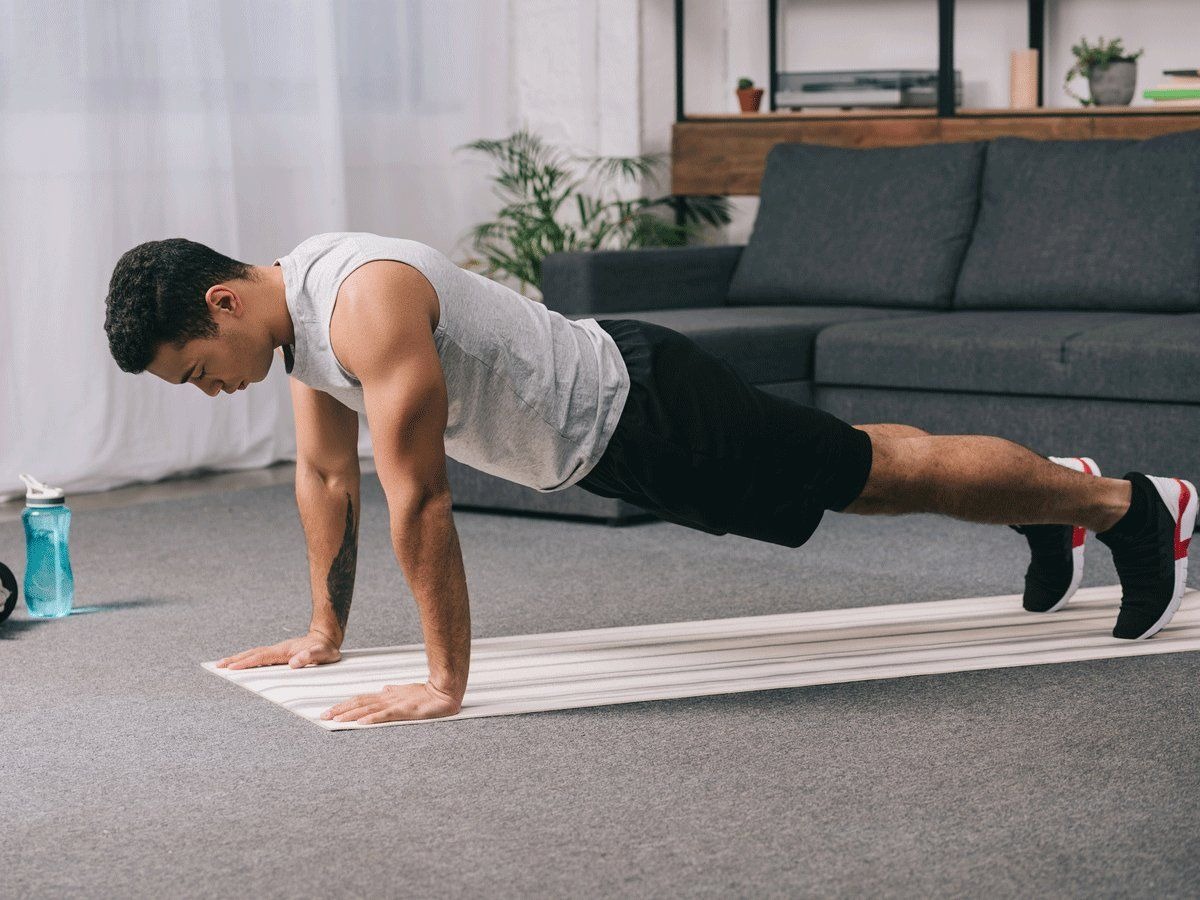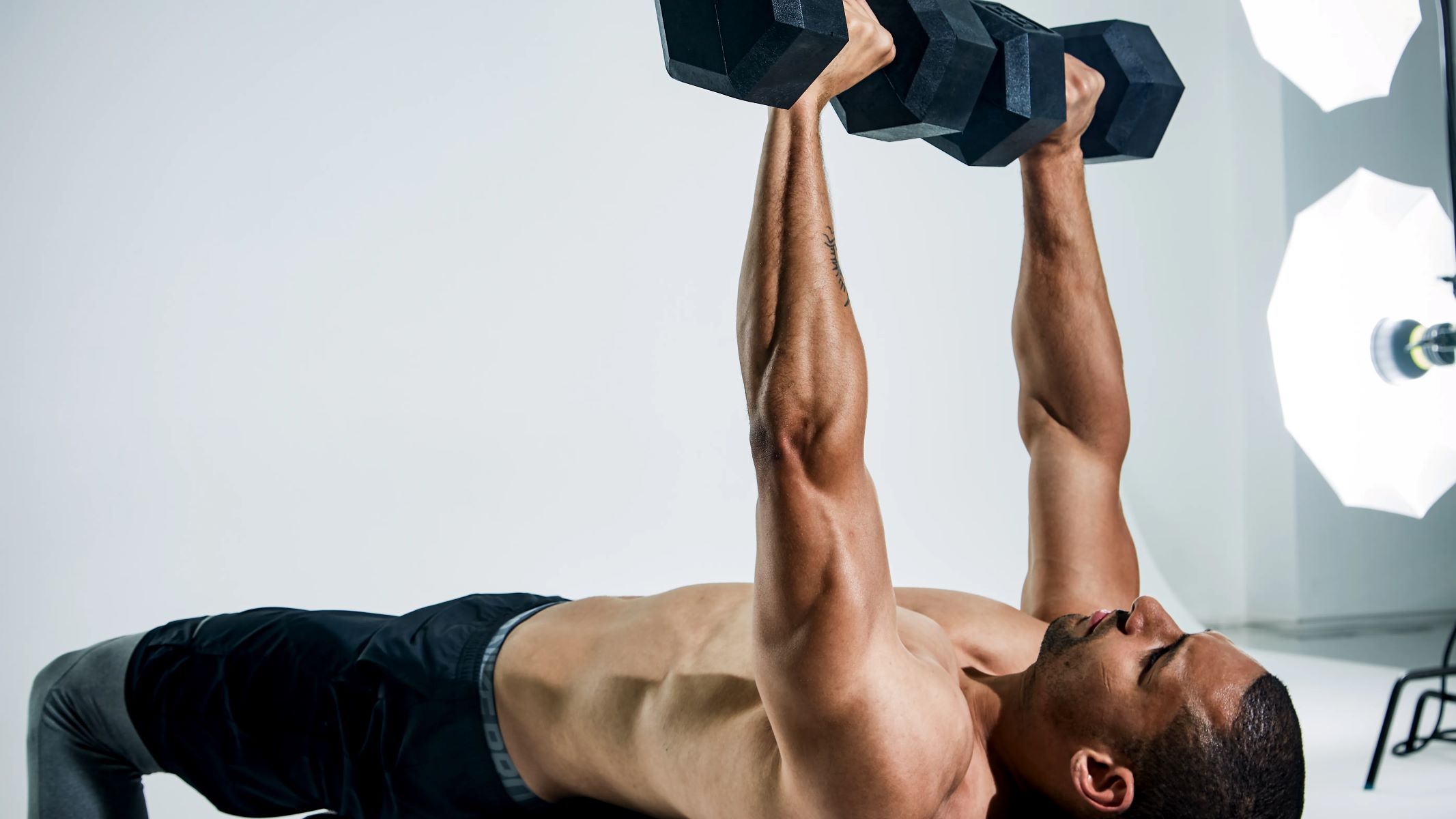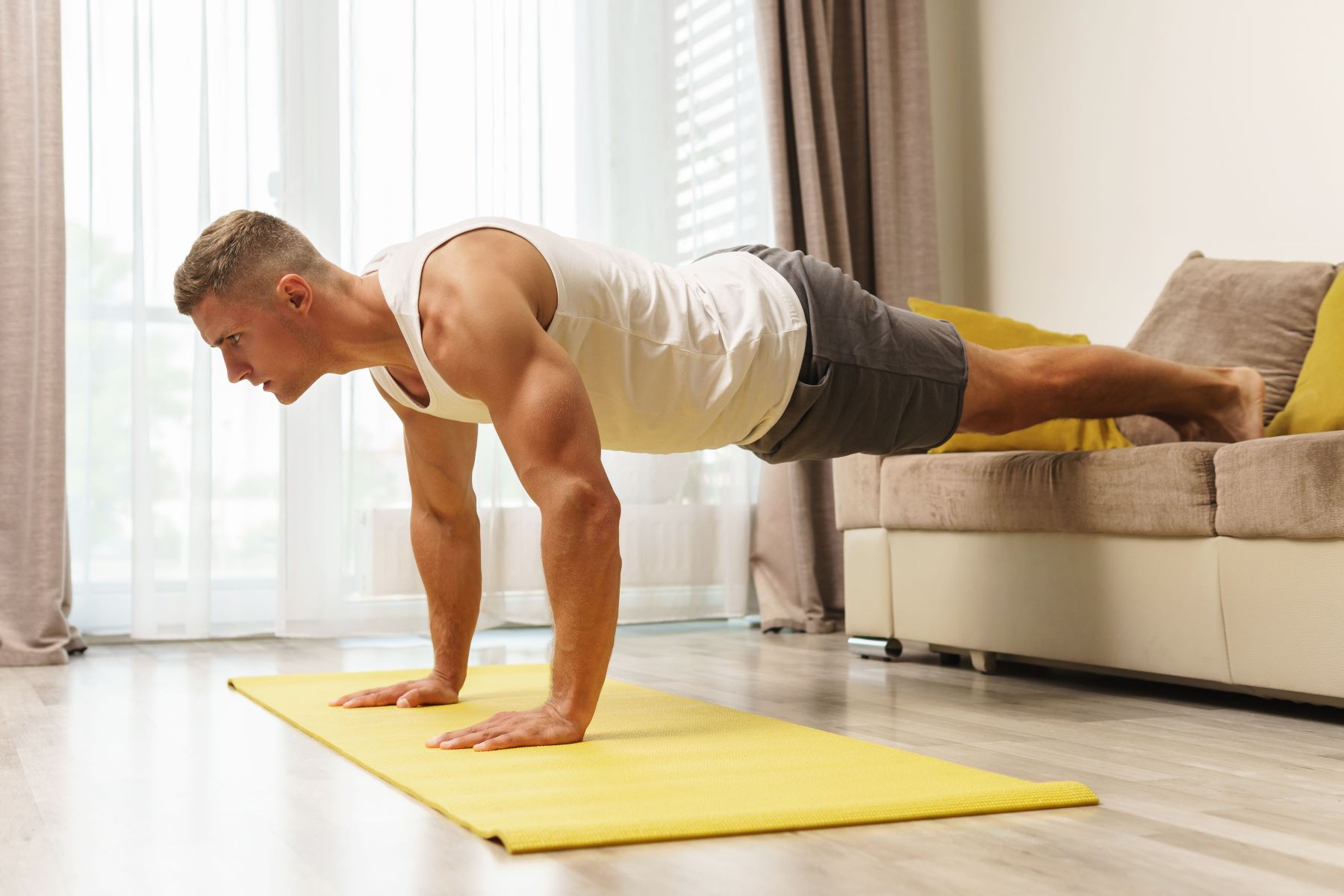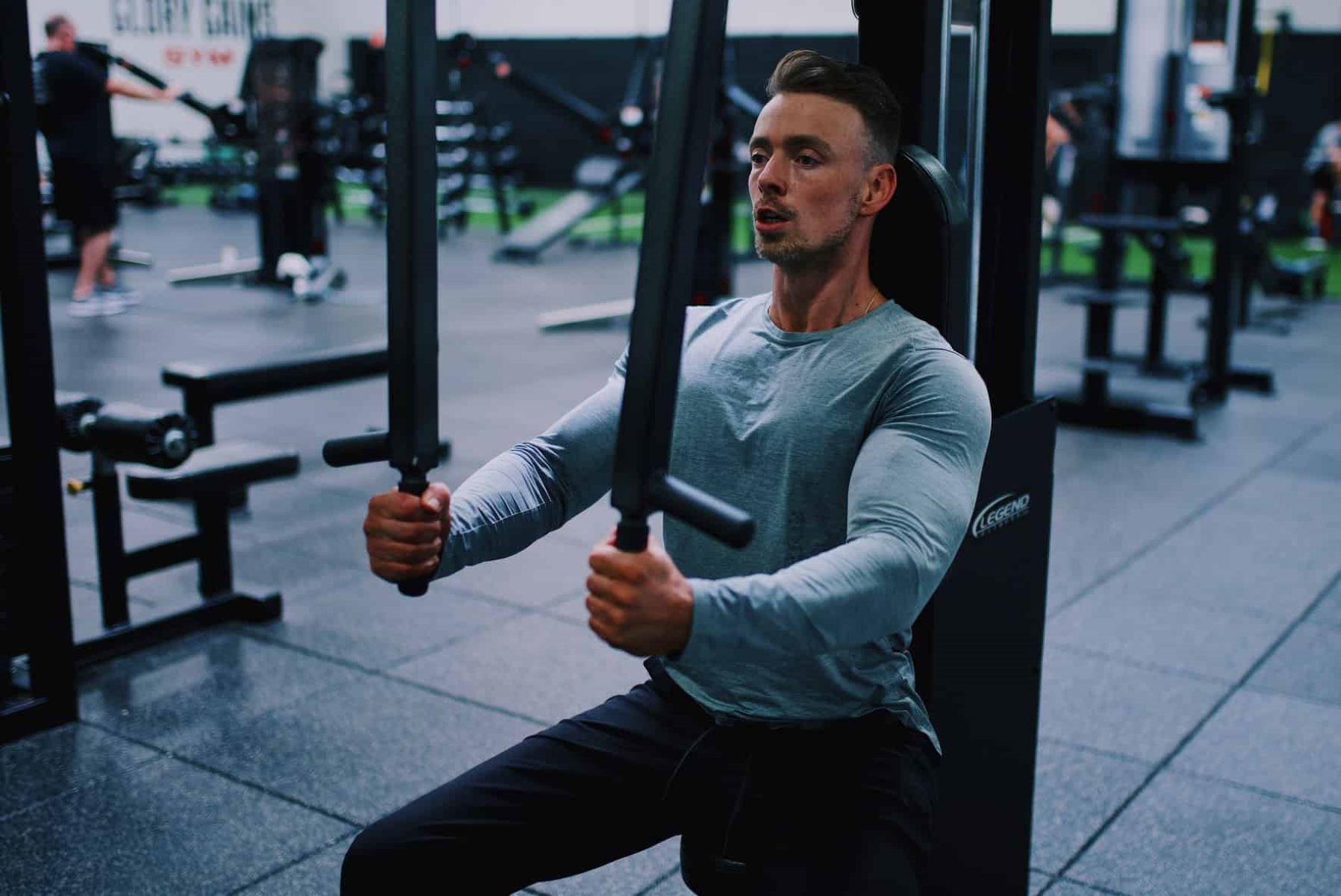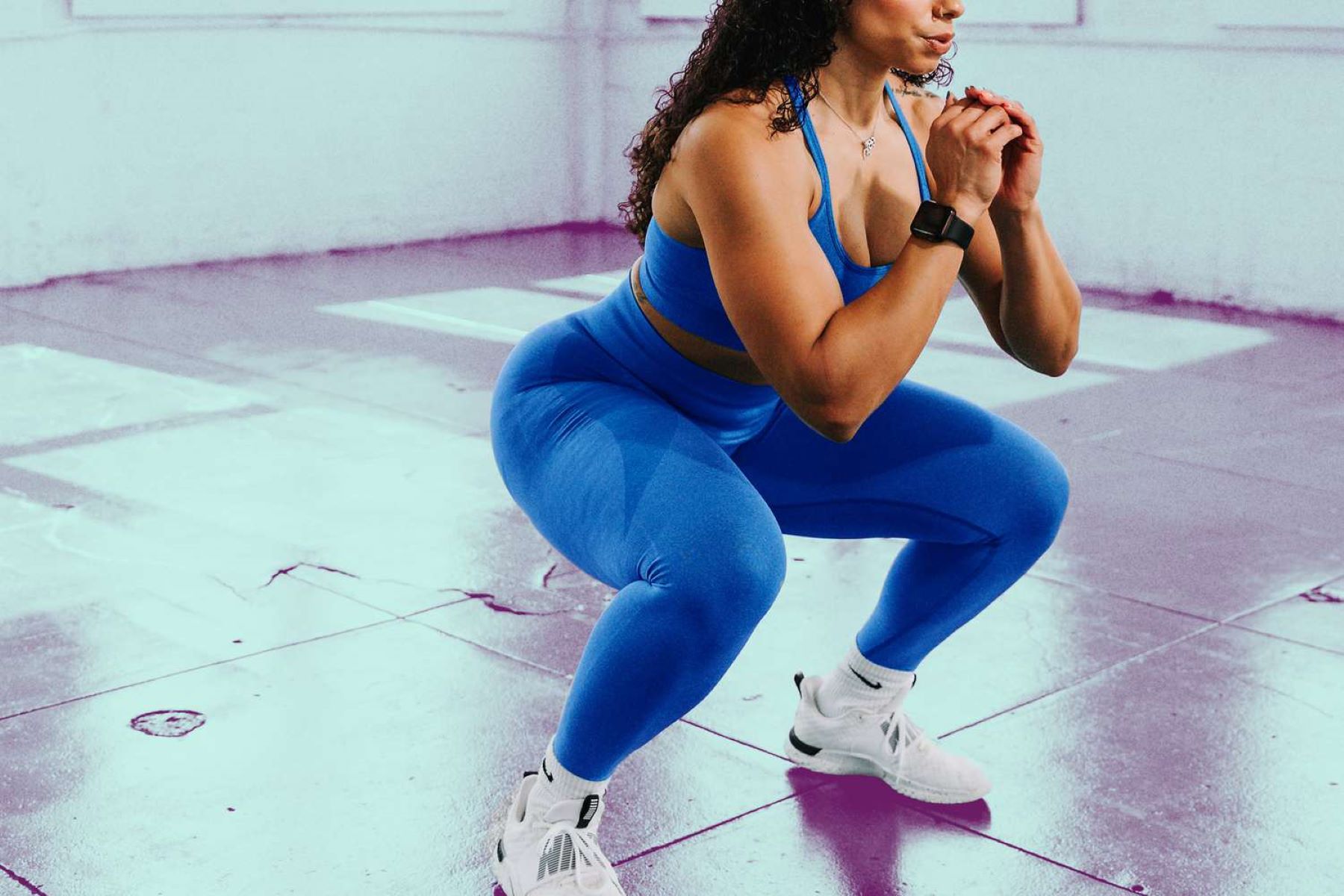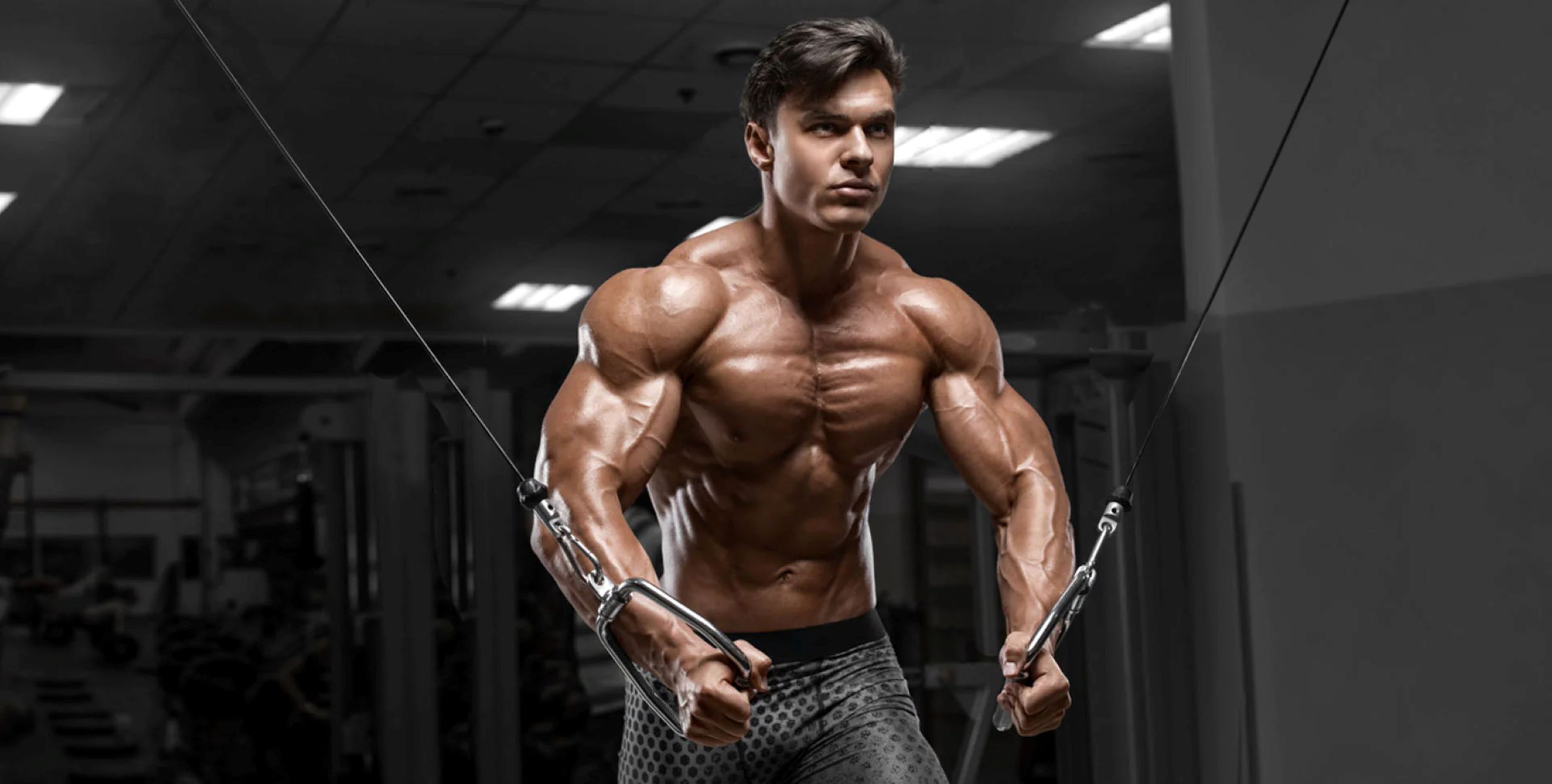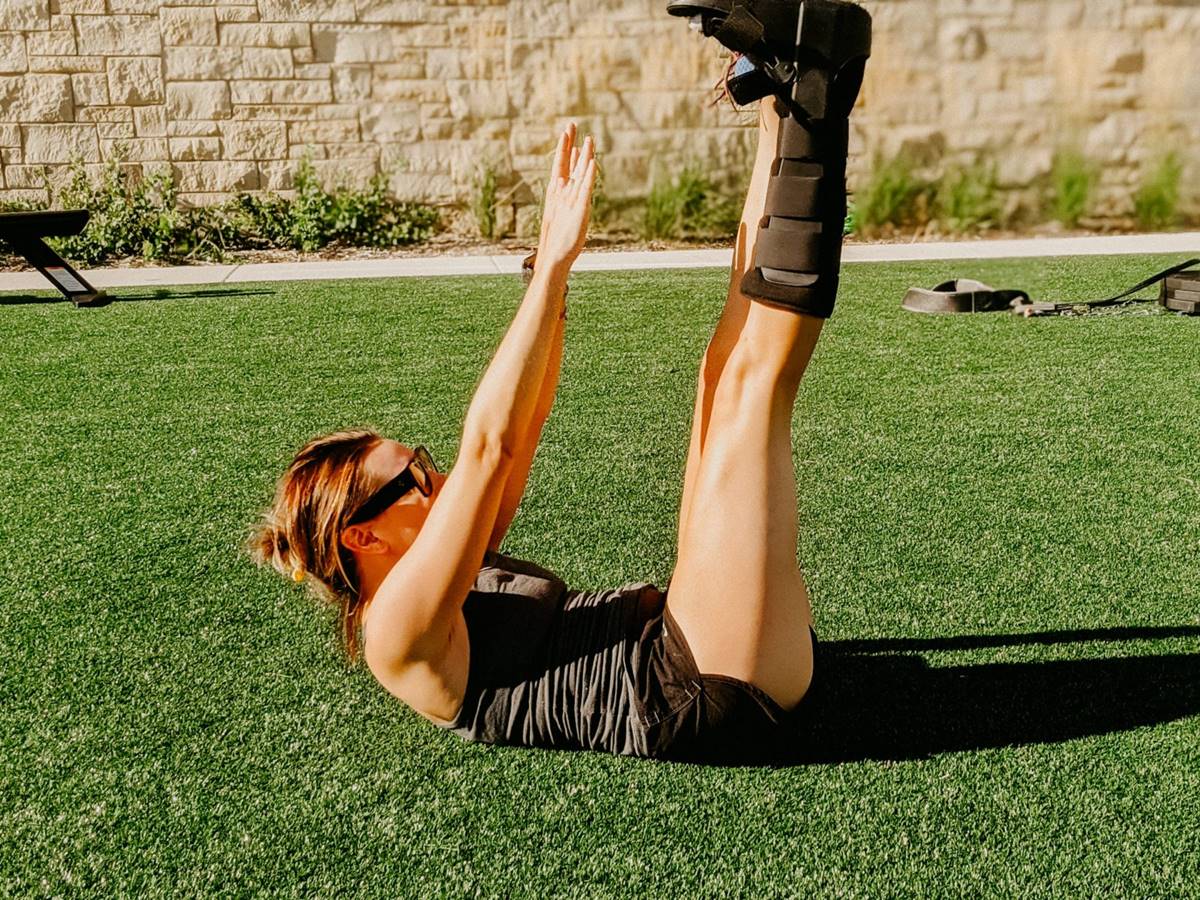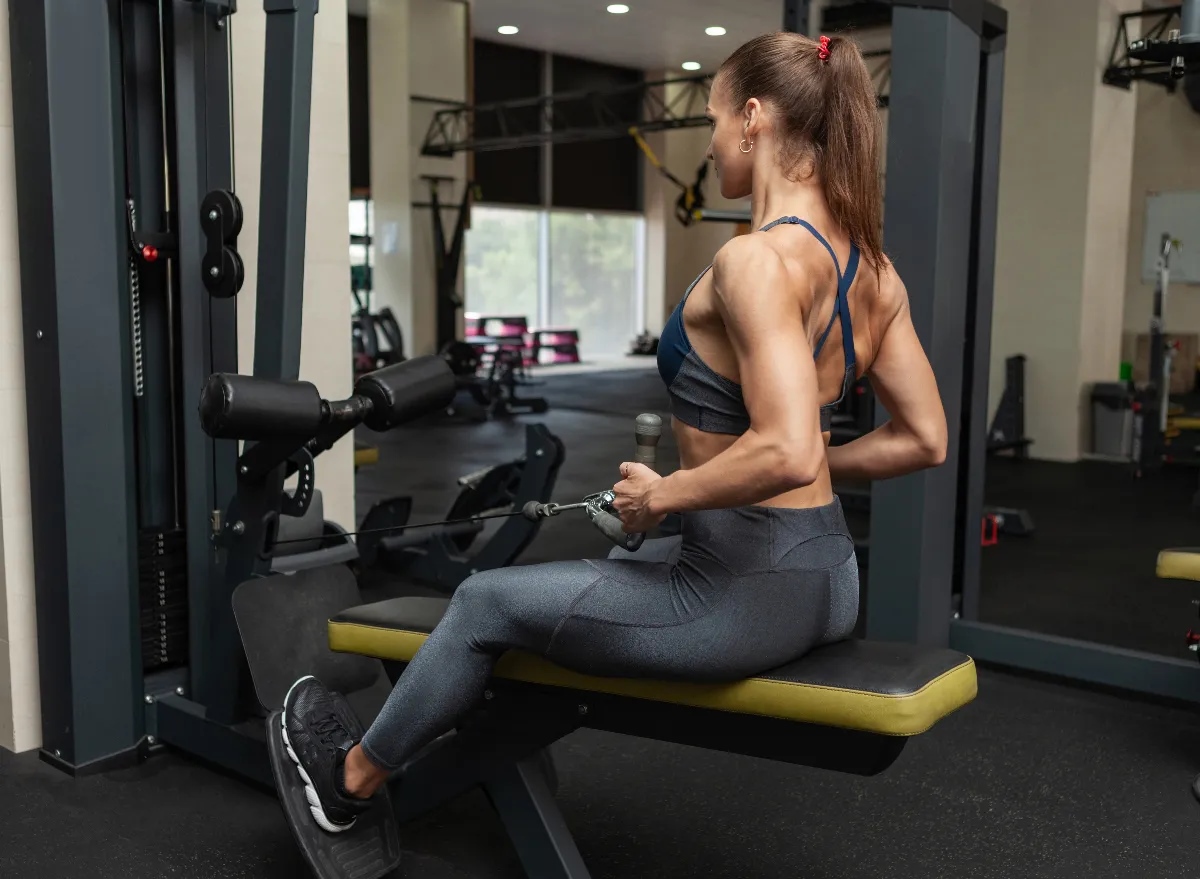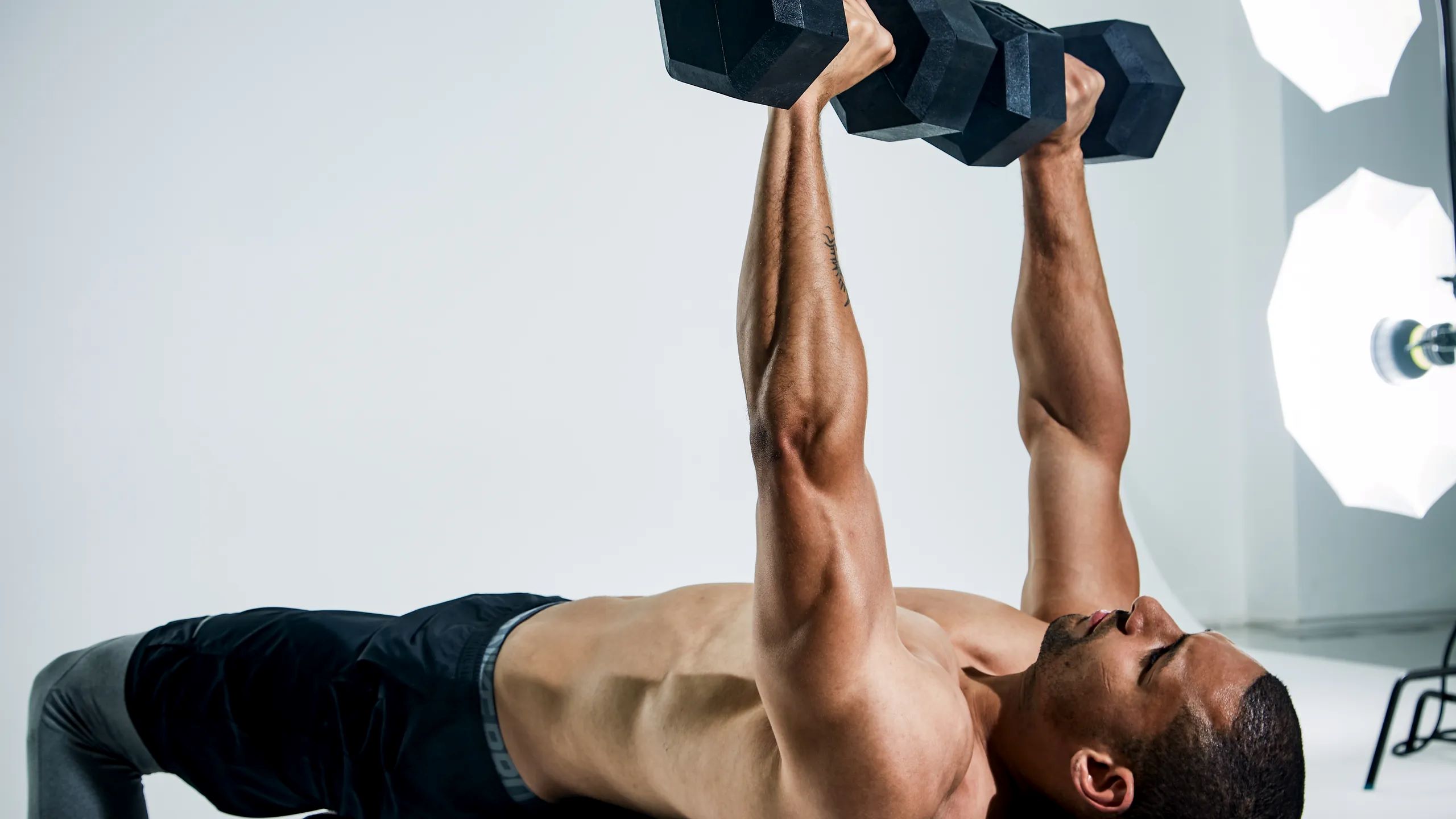

Featured
What Is The Best Workout For Chest
Published: October 6, 2023
Discover the featured workout for chest that is proven to give you the best results. Enhance your chest muscles with this effective routine.
Introduction
When it comes to sculpting a strong, well-defined upper body, one cannot ignore the importance of a powerful chest. A well-developed chest not only contributes to a symmetrical physique but also plays a vital role in enhancing overall strength and athletic performance. Whether you’re an aspiring bodybuilder or simply someone who wants to improve their upper body strength, knowing the best workout for your chest is essential.
The chest, or pectoralis muscles, are a key component of the upper body. They consist of the pectoralis major and pectoralis minor, which are responsible for movements such as pushing, pressing, and rotating the arms. A strong chest not only aids in functional movements but also helps with everyday activities like lifting and pushing heavy objects.
When it comes to designing an effective chest workout, there are several factors to consider. These include exercise selection, proper form, weight selection, and training frequency. By understanding these factors and incorporating them into your routine, you can maximize your chest development and achieve your fitness goals.
In this article, we will explore the various exercises that target the chest muscles, along with tips and strategies to improve strength and definition. Whether you prefer hitting the gym or working out at home, there are plenty of options available to help you build a strong and impressive chest.
Importance of a Strong Chest
A strong chest goes beyond aesthetics; it plays a crucial role in improving overall upper body strength and functional movements. Here are some reasons why building a strong chest is essential:
1. Upper Body Strength: The chest muscles are involved in various upper body exercises and movements, such as pushing, pressing, and lifting. A strong chest allows you to perform these movements with greater power and efficiency, improving your overall upper body strength.
2. Improved Posture: A weak chest can contribute to postural imbalances, such as rounded shoulders and a hunched back. Strengthening the chest muscles helps counteract these imbalances, promoting better posture and reducing the risk of related issues, such as upper back and neck pain.
3. Enhanced Performance in Sports and Everyday Activities: Many sports and physical activities involve the use of the chest muscles, such as throwing, pushing, and tackling. A strong chest provides the necessary power and stability required for optimal performance in these activities.
4. Injury Prevention: Strengthening the chest muscles can help prevent potential injuries, especially in the shoulder and upper back regions. A balanced and strong chest aids in maintaining proper alignment and stability in these areas, reducing the risk of strains and overuse injuries.
5. Balanced Physique: A well-developed chest contributes to a balanced and proportionate upper body appearance. It can enhance the overall aesthetics by creating a visually appealing upper body shape and highlighting the definition in the chest and shoulder areas.
6. Boosted Confidence: A strong and well-defined chest can improve self-confidence and body image. When you feel physically strong and proud of your body, it positively impacts your overall self-esteem and confidence in various aspects of life.
By understanding the importance of a strong chest, you can prioritize chest workouts and incorporate exercises that specifically target the chest muscles into your fitness routine. Whether you are an athlete trying to improve performance or someone looking to enhance their physique, a strong chest can significantly contribute to your goals.
Key Muscles of the Chest
The chest, or pectoralis muscles, are a complex group of muscles that can be broken down into two main parts: the pectoralis major and pectoralis minor. Understanding the anatomy of the chest muscles is essential for effectively targeting and developing this area.
1. Pectoralis Major: The pectoralis major is the larger muscle of the chest and is primarily responsible for the movement of the arm towards the center of the body (adduction), as well as internal rotation and flexion of the arm. It consists of two main portions: the clavicular head (upper chest) and the sternal head (lower chest). Targeting both portions of the pectoralis major is important for achieving a balanced and well-defined chest.
2. Pectoralis Minor: Situated beneath the pectoralis major, the pectoralis minor is a smaller muscle that plays a supporting role in shoulder movements. It aids in stabilizing the scapula and assists in movements such as pulling the shoulder blades forward and downward.
In addition to the pectoralis major and pectoralis minor, there are other muscles that contribute to the overall strength and appearance of the chest:
1. Serratus Anterior: Located on the sides of the chest, the serratus anterior muscle assists in stabilizing the scapula and plays a role in movements that require pushing or reaching overhead.
2. Subclavius: Situated beneath the collarbone, the subclavius muscle aids in stabilizing the clavicle and contributes to movements involving the shoulder joint.
Targeting all these muscles is important for achieving a well-rounded and fully developed chest. By incorporating a variety of exercises that target different angles, ranges of motion, and muscle fibers, you can ensure comprehensive chest development.
It’s worth noting that genetics play a role in the shape and size of your chest muscles. Some individuals may naturally have a more rounded or pronounced chest, while others may have a flatter appearance. However, with consistent training and proper exercise selection, anyone can develop strength, definition, and symmetry in their chest muscles.
Factors to Consider for an Effective Chest Workout
Designing an effective chest workout requires considering various factors that contribute to muscle growth and strength development. By understanding and incorporating these factors, you can optimize your chest workouts and achieve the desired results. Here are the key factors to consider:
1. Exercise Selection: Choosing a variety of chest exercises that target different angles and muscle fibers is crucial for comprehensive chest development. Incorporate compound exercises like bench press and incline press, as well as isolation exercises like flyes and cable crossovers, to engage all parts of the chest effectively.
2. Proper Form and Technique: Maintaining proper form during chest exercises ensures that you are targeting the chest muscles effectively and reducing the risk of injury. Focus on proper alignment, full range of motion, and controlled movements to maximize muscle engagement and minimize strain on other muscle groups.
3. Weight Selection: Choosing the appropriate weight for each exercise is vital for stimulating muscle growth. The weight should be challenging enough that you reach muscle fatigue within the target rep range, typically 8-12 reps for hypertrophy (muscle growth). Adjust the weight as needed to maintain proper form and intensity throughout the workout.
4. Rep Range: Varying the rep range in your chest workouts can promote different muscle adaptations. Aim for a mix of low (4-6 reps), moderate (8-12 reps), and high (12-15+ reps) rep ranges to target different muscle fibers and stimulate both strength and hypertrophy.
5. Training Frequency: It is recommended to train the chest 1-2 times per week, allowing for adequate rest and recovery between sessions. This frequency allows for sufficient stimulus for muscle growth without risking overtraining.
6. Proper Rest and Recovery: Adequate rest and recovery are essential for muscle growth and strength development. Ensure you have rest days between chest workouts and prioritize quality sleep and nutrition to optimize recovery and maximize the benefits of your workouts.
7. Progressive Overload: To continue making progress, gradually increase the intensity of your chest workouts over time. This can be done by adding weight, increasing reps, reducing rest time, or incorporating advanced variations of exercises.
8. Mind-Muscle Connection: Focus on establishing a strong mind-muscle connection during chest exercises. Concentrate on contracting and squeezing the chest muscles throughout each rep, rather than relying solely on momentum or external force.
By considering these factors and tailoring your chest workouts accordingly, you can ensure continuous progress, prevent plateaus, and achieve the desired strength and definition in your chest muscles.
Different Chest Exercises
There are numerous exercises that target the chest muscles and contribute to overall chest development. By incorporating a variety of exercises into your chest workouts, you can effectively engage different muscle fibers and stimulate growth. Here are some of the most effective chest exercises:
1. Bench Press: The bench press is a classic compound exercise that targets the pectoralis major, deltoids, and triceps. It can be done with a barbell or dumbbells and allows for heavy weightlifting, making it a key exercise for building chest strength and muscle mass.
2. Push-ups: Push-ups are a versatile bodyweight exercise that primarily targets the chest muscles while also engaging the shoulders and triceps. They can be modified based on fitness level, and variations such as wide grip, close grip, and decline push-ups can emphasize different parts of the chest.
3. Dumbbell Flyes: Dumbbell flyes isolate the chest muscles and provide a deep stretch, making them effective for targeting the outer chest (pectoralis major). Lie on a flat bench with dumbbells in hand, arms extended, and perform a controlled fly motion, squeezing the chest at the top of the movement.
4. Chest Dips: Chest dips target the lower and outer chest muscles. To perform this exercise, use parallel bars or dip bars, lower your body down while keeping your torso leaning forward, and drive upwards by pressing through your palms. Use caution and ensure proper technique to avoid injury.
5. Cable Crossovers: Cable crossovers are an isolation exercise that provides constant tension throughout the range of motion, effectively targeting both the pectoralis major and pectoralis minor. Stand in the center of a cable machine, grab the handles, and bring them together in front of your chest while maintaining a slight bend in your elbows.
6. Chest Press Machine: Chest press machines are a great option for beginners or those who prefer controlled movements. They offer stability and isolate the chest muscles, allowing you to focus on the push movement without the need for stabilizing other muscle groups.
7. Incline and Decline Chest Exercises: Incline and decline variations of exercises like bench press and dumbbell flyes specifically target different parts of the chest. Incline exercises target the upper chest, while decline exercises emphasize the lower chest. Incorporating incline and decline movements into your routine can help achieve a well-rounded chest development.
Remember to choose exercises that suit your fitness level, preferences, and available equipment. Experiment with different exercises to find the ones that work best for you, and aim for a balanced combination of compound and isolation exercises to maximize chest development.
Bench Press
The bench press is arguably one of the most popular and effective exercises for building a strong and well-developed chest. It primarily targets the pectoralis major, but also engages the shoulders, triceps, and even the core. Here’s how you can perform the bench press:
1. Lie flat on a bench with your feet firmly planted on the floor. Your back, head, and buttocks should be in contact with the bench for stability.
2. Grasp the barbell with an overhand grip slightly wider than shoulder-width. Ensure that your wrists are aligned with your forearms and your elbows are at a 90-degree angle.
3. Take a deep breath and unrack the barbell, holding it directly above your chest with your arms extended. This is your starting position.
4. Lower the barbell slowly and under control towards the mid/lower part of your chest. Keep your elbows slightly flared out to the sides to emphasize chest activation.
5. Pause briefly when the barbell touches your chest, and then powerfully push it back up to the starting position by fully extending your arms. Exhale as you exert force.
6. Repeat for the desired number of repetitions, ensuring proper form and control throughout the movement.
Here are some tips to maximize the effectiveness of your bench press:
1. Focus on Form: Maintain a tight grip on the barbell throughout the movement and keep your shoulder blades retracted for stability. Avoid arching your back excessively and bouncing the barbell off your chest.
2. Use Appropriate Weight: Start with a weight that allows you to perform the exercise with proper form. Gradually increase the weight as you become more comfortable and experienced.
3. Vary Your Grip: Experiment with different grip widths to target different parts of the chest and activate more muscle fibers. A wider grip emphasizes the outer chest, while a narrower grip engages the triceps more.
4. Mix Up Your Sets and Reps: Incorporate both heavy sets with lower reps (4-6) for strength and lighter sets with higher reps (8-12) for hypertrophy. This combination will help you build both strength and muscle size.
5. Utilize Spotter Safety: If you are handling heavy weights or pushing yourself to failure, it’s essential to have a spotter to ensure safety and help you if needed.
The bench press can be performed on a flat bench, incline bench, or decline bench to target different areas of the chest. Incorporate the bench press into your chest routine regularly, striving for progressive overload, and you’ll see significant improvements in your chest strength and development over time.
Push-ups
Push-ups are a versatile and effective bodyweight exercise that targets the chest muscles, along with the shoulders, triceps, and core. They can be performed anywhere and require no equipment, making them an accessible exercise for individuals of all fitness levels. Here’s how to perform push-ups correctly:
1. Begin in a plank position with your hands shoulder-width apart, aligned with your chest, and your toes on the ground. Your body should be in a straight line from head to toe.
2. Engage your core and lower yourself down by bending your elbows. Keep your elbows at about a 45-degree angle relative to your body.
3. Lower your body until your chest is just above the ground, or as far as you can comfortably go. Maintain a straight body position throughout the movement.
4. Push through your palms and extend your arms, raising your body back up to the starting position. Keep your core engaged and maintain a controlled and steady pace.
5. Repeat for the desired number of repetitions, focusing on maintaining proper form and engaging the chest muscles throughout the movement.
Here are some tips to get the most out of your push-ups:
1. Maintain Proper Form: Keep your body in a straight line from head to toe throughout the entire movement. Avoid sagging your hips or raising your buttocks too high.
2. Adjust Hand Position: Varying your hand position can target different areas of the chest. A wider hand placement emphasizes the outer chest, while a narrower grip engages the triceps more. Experiment and find what works best for you.
3. Modify the Difficulty: If regular push-ups are too challenging, start with modified push-ups by kneeling on the ground instead of being on your toes. As you become stronger, gradually progress to standard push-ups on your toes.
4. Focus on Tempo: Aim to perform push-ups with controlled and deliberate movements. Slow down the lowering phase and push up explosively. This will increase time under tension, activating more muscle fibers.
5. Incorporate Variations: Once you have mastered the standard push-up, you can introduce variations like wide grip, close grip, decline, or incline push-ups to target different muscles within your chest.
Push-ups provide a challenging and effective workout for the chest muscles, even without additional weight or equipment. They can be easily incorporated into your workout routine or done as a standalone exercise. Whether you are a beginner or an advanced fitness enthusiast, push-ups are an excellent exercise to develop strength, endurance, and muscle definition in your chest.
Dumbbell Flyes
Dumbbell flyes are an isolation exercise that targets the chest muscles, specifically the pectoralis major. They are highly effective for developing the outer portion of the chest and creating a well-rounded chest shape. Here’s how to correctly perform dumbbell flyes:
1. Lie flat on a bench with a dumbbell in each hand. Extend your arms above your chest with your palms facing each other and a slight bend in your elbows. This is your starting position.
2. With a controlled motion, lower the dumbbells out to the sides in a wide arc, maintaining a slight bend in your elbows and keeping them fixed in that position throughout the movement.
3. Continue lowering the dumbbells until you feel a deep stretch in your chest muscles or until your upper arms are parallel to the floor. Be cautious not to go too far and strain your shoulder joints.
4. Engage your chest muscles and slowly bring the dumbbells back to the starting position, following the same wide arc motion. Squeeze your chest at the top of the movement for an extra contraction.
5. Repeat for the desired number of repetitions, focusing on maintaining proper form and controlled contraction of the chest muscles throughout the exercise.
Here are some tips to maximize the effectiveness of dumbbell flyes:
1. Use Proper Weight: Select dumbbells that allow you to perform the exercise with proper form and control. It’s important to find the right balance between challenging your muscles and maintaining proper technique.
2. Focus on Control and Squeeze: Emphasize the contraction in your chest muscles as you bring the dumbbells together at the top of the movement. This controlled squeeze will help maximize muscle engagement and promote muscle growth.
3. Adjust Bench Incline: Performing dumbbell flyes on an adjustable bench allows you to target different areas of the chest. An incline bench targets the upper chest, while a decline bench focuses on the lower chest. Varying the bench incline adds variety and targets different muscle fibers.
4. Avoid Excessive Range of Motion: While it’s important to achieve a full stretch in the chest muscles, be cautious not to go too far and risk joint strain. Find a range of motion that allows you to experience a deep stretch without compromising proper form or comfort.
5. Include Flyes in Your Routine: Incorporate dumbbell flyes into your chest workout routine at least once a week, either as a primary exercise or in combination with other chest exercises. Variation and consistency in your routine are key to stimulating muscle growth.
Dumbbell flyes are an excellent exercise to isolate and develop the chest muscles. By incorporating them into your routine and focusing on proper form, control, and muscle engagement, you can achieve a well-defined and balanced chest.
Chest Dips
Chest dips are a compound exercise that primarily targets the chest muscles, along with the shoulders and triceps. They are an effective bodyweight exercise that can be performed using parallel bars or dip bars, making them accessible for individuals at any fitness level. Here’s how to correctly perform chest dips:
1. Begin by gripping the parallel bars or dip bars firmly with your hands, palms facing down. Position yourself so that your arms are fully extended, and your body is hanging between the bars. This is your starting position.
2. Engage your core, lean slightly forward, and slowly lower your body by bending your elbows while maintaining control. Continue descending until your shoulders are below your elbows or until you feel a deep stretch in your chest muscles.
3. Pause briefly at the bottom of the movement, then push through your palms and extend your arms, raising your body back up to the starting position. Keep your core engaged and maintain control throughout the movement.
4. Repeat for the desired number of repetitions, focusing on proper form and engaging the chest muscles throughout the exercise.
Here are some tips to perform chest dips effectively:
1. Maintain Proper Form: Keep your body in a straight line from head to toe throughout the entire movement. Avoid swinging or excessively leaning forward or backward.
2. Activate the Chest Muscles: Focus on consciously engaging your chest muscles as you push yourself up. This will help maximize the benefits of the exercise and promote chest development.
3. Gradually Increase Difficulty: As you become more comfortable with chest dips, you can make the exercise more challenging by adding weight using a weight belt or by using resistance bands. This will help further stimulate muscle growth.
4. Avoid Overextension or Locking Out: While it’s important to fully extend your arms at the top of the movement, avoid hyperextending or locking out your elbows. Maintain a slight bend to keep tension on the muscles.
5. Use Dip Assist Machines or Bands: If you’re unable to perform full bodyweight chest dips, you can utilize dip assist machines or resistance bands to gradually build strength and work towards performing unassisted dips.
Incorporating chest dips into your workout routine helps build upper body strength, specifically targeting the chest muscles. Whether you’re performing them as a standalone exercise or as part of a full-body routine, chest dips provide a challenging and effective way to develop a strong and well-defined chest.
Cable Crossovers
Cable crossovers are an isolation exercise that targets the chest muscles, specifically the pectoralis major. They provide constant tension throughout the range of motion, making them highly effective for chest development. Cable crossovers can be performed using a cable machine with adjustable pulleys. Here’s how to correctly perform cable crossovers:
1. Set the cable pulleys to a height slightly above shoulder level. Attach D-handle attachments to each pulley and adjust the weight accordingly.
2. Stand in the center of the cable machine with your feet shoulder-width apart. Grasp the D-handle attachments, one in each hand, with your arms extended out to the sides. This is your starting position.
3. Step forward slightly and lean forward from your hips, keeping your back straight and core engaged. This will create tension in the cables.
4. With a controlled motion, bring your hands together in front of your chest, crossing them over each other as if you were hugging someone. Focus on squeezing your chest muscles at the end of the movement.
5. Slowly reverse the motion, allowing your arms to return to the starting position with control. Maintain tension in the chest muscles throughout the entire movement.
6. Repeat for the desired number of repetitions, ensuring proper form and maintaining tension on the chest muscles throughout the exercise.
Here are some tips to perform cable crossovers effectively:
1. Find the Right Weight: Start with a weight that allows you to maintain proper form and control. Adjust the weight as needed to challenge your chest muscles while still performing the exercise with good technique.
2. Focus on the Chest Muscles: Concentrate on engaging and contracting the chest muscles during the movement. Visualize squeezing the chest together as you bring your hands together.
3. Control the Movement: Maintain control of the cables throughout the exercise. Avoid allowing momentum or body sway to assist in the movement, as this takes emphasis away from the chest muscles.
4. Vary the Height and Angle: You can experiment with different cable pulley heights and angles to target different areas of the chest. Adjusting the height can emphasize the upper or lower chest, while changing the angle can focus on the inner or outer chest.
5. Combine with Other Chest Exercises: Cable crossovers can be incorporated into your chest workout routine alongside other exercises, such as bench press or push-ups, to create a well-rounded chest workout.
Incorporating cable crossovers into your chest workout routine helps target the chest muscles effectively, providing constant tension and promoting muscle growth. By focusing on proper form and engaging the chest muscles throughout the movement, you can maximize the benefits of cable crossovers and achieve a strong and well-defined chest.
Chest Press Machine
The chest press machine is a popular piece of gym equipment specifically designed to target the chest muscles. It provides stability and controlled resistance, making it suitable for individuals of all fitness levels. The machine primarily targets the pectoralis major, but also engages the deltoids and triceps. Here’s how to correctly use the chest press machine:
1. Adjust the seat height so that the handles are at chest level when comfortably seated. Ensure that your feet are flat on the floor and your back is firmly against the backrest.
2. Grasp the handles with an overhand grip, palms facing forward, and align your elbows with your shoulders. This is your starting position.
3. Push the handles forward, extending your arms straight in front of you. Keep your core engaged and maintain control throughout the movement.
4. Pause briefly once your arms are fully extended, feeling a contraction in your chest muscles.
5. Slowly reverse the motion, bringing the handles back towards your chest in a controlled manner, while maintaining tension on the chest muscles.
6. Repeat for the desired number of repetitions, focusing on proper form and engaging the chest muscles throughout the exercise.
Here are some tips to get the most out of your chest press machine workout:
1. Adjust the Weight: Select the appropriate weight that challenges your chest muscles without compromising your form. Start with a lighter weight if you are new to using the machine and gradually increase the resistance as you progress.
2. Maintain Proper Form: Keep your back firmly against the backrest throughout the movement, and avoid arching your back or lifting your shoulders off the seat. This ensures that your chest muscles are the primary movers during the exercise.
3. Control the Movement: Focus on maintaining control during both the concentric (pushing) and eccentric (returning) phases of the exercise. Avoid using momentum or jerking motions to move the handles.
4. Engage Your Chest Muscles: Concentrate on engaging and contracting your chest muscles throughout the movement. Visualize squeezing your chest as you push the handles away from your body.
5. Combine with Other Chest Exercises: Incorporate the chest press machine into a well-rounded chest workout routine that includes a variety of exercises such as dumbbell flyes, push-ups, or cable crossovers. This allows for balanced chest development and muscle stimulation from different angles.
Using the chest press machine can be a valuable addition to your chest workout routine, providing a controlled and targeted approach to developing the chest muscles. By focusing on proper form and engaging the chest muscles during each repetition, you can achieve a strong, well-defined chest.
Incline and Decline Chest Exercises
Incorporating incline and decline chest exercises into your workout routine can help target different areas of the chest, providing a well-rounded and balanced development. These exercises involve adjusting the angle of the bench to emphasize either the upper or lower portion of the pectoralis major muscles.
Incline Exercises: Incline exercises primarily target the upper chest muscles, creating a fuller and more rounded appearance. Here are a few common incline chest exercises:
1. Incline Bench Press: Similar to the traditional bench press, the incline bench press is performed on an adjustable bench set at an incline of around 30-45 degrees. This variation shifts the emphasis onto the upper chest while still engaging the shoulders and triceps.
2. Incline Dumbbell Press: Grab a pair of dumbbells and lie back on an inclined bench. With your palms facing forward, press the dumbbells away from your chest and towards the ceiling. Incline dumbbell presses offer a greater range of motion and can help improve unilateral strength.
3. Incline Push-Ups: Position your hands on an elevated surface, such as a bench or step, with your feet on the ground. Perform push-ups in the same manner as traditional push-ups. This exercise allows you to target the upper chest while engaging the shoulders and triceps.
Decline Exercises: Decline exercises place more emphasis on the lower portion of the pectoralis major, helping to develop the lower chest muscles. Here are a few effective decline chest exercises:
1. Decline Bench Press: Similar to the traditional bench press, the decline bench press is performed on an adjustable bench set at a decline of around 30-45 degrees. This variation targets the lower chest muscles and can be performed with a barbell or dumbbells.
2. Decline Dumbbell Flyes: Lie back on a decline bench with a dumbbell in each hand. With your arms slightly bent, lower the dumbbells out to the side in a wide arc and feel a stretch in the lower chest. Bring the dumbbells back up to the starting position, focusing on squeezing the chest muscles at the top.
3. Decline Push-Ups: Position your feet on an elevated surface, such as a bench or step, with your hands on the ground. Perform push-ups in the same manner as traditional push-ups. This exercise helps target the lower portion of the chest while engaging the shoulders and triceps.
By incorporating incline and decline chest exercises into your routine, you target different areas of the chest and stimulate muscle growth from various angles. This helps create a well-balanced and proportionate chest appearance, emphasizing both the upper and lower regions of the pectoralis major. Remember to adjust the bench angle according to the exercise and your fitness level, and maintain proper form to get the most out of these exercises.
Choosing the Right Weight and Rep Range
Choosing the appropriate weight and rep range is crucial for achieving optimal results in your chest workouts. It plays a significant role in stimulating muscle growth, strength development, and overall chest improvement. Here’s what you need to consider:
Weight Selection: Selecting the right weight for your chest exercises is essential for effectively challenging your muscles without compromising form. Here are some guidelines to follow:
1. Start with a Manageable Weight: Begin with a weight that allows you to complete your desired number of repetitions with proper form and without excessive strain. It should be challenging enough to push your muscles, but not so heavy that you sacrifice technique.
2. Gradually Increase Weight: Progressive overload is key to muscle growth. As you get stronger, gradually increase the weight to keep challenging your chest muscles. Aim for a weight that allows you to complete the desired number of repetitions with proper form, but with an increasing level of difficulty.
3. Listen to Your Body: Pay attention to how your muscles feel during the exercise. If the weight feels too light and you can easily exceed the desired rep range, it may be time to increase the weight. Conversely, if you’re struggling to complete the designated reps with proper form, it may be too heavy for your current level of strength.
Rep Range: Deciding on the appropriate rep range depends on your specific goals. Different rep ranges elicit different muscle adaptations. Here are some general guidelines:
1. Strength and Power: Lower rep ranges, typically around 1-6 reps, target strength and power development. This range allows you to lift heavier weights, recruiting a high percentage of muscle fibers and enhancing neuromuscular adaptation.
2. Hypertrophy (Muscle Growth): Moderate rep ranges, usually around 8-12 reps, are ideal for promoting muscle growth. This range induces significant metabolic stress and muscle damage, stimulating muscle protein synthesis and leading to muscle hypertrophy.
3. Endurance and Definition: Higher rep ranges, such as 15 or more reps, focus on muscular endurance and promoting definition. While not as effective for significant muscle growth, they help improve muscle endurance, vascularity, and muscular definition.
Ultimately, your rep range choice should align with your specific goals. Consider incorporating a mix of rep ranges in your chest workouts to target different muscle fibers and achieve balanced chest development.
It’s important to note that individual differences and preferences also play a role. Experiment with different weights and rep ranges to find what works best for you, while still challenging yourself and maintaining proper form. Regularly reassess your progress and make necessary adjustments to keep pushing your chest muscles to new heights.
Training Frequency and Rest Days
Training frequency and allowing for adequate rest days are critical factors to consider for optimal chest muscle development. Balancing the right amount of workout sessions and rest is essential for muscle recovery, growth, and overall progress. Here’s what you need to know:
Training Frequency: The frequency of your chest workouts will depend on various factors such as your fitness level, goals, and overall training routine. Here are some general guidelines:
1. Beginners: If you’re new to chest training or strength training in general, starting with 1-2 chest workouts per week is sufficient. This allows your body to adapt to the exercises and gradually build strength.
2. Intermediate: As you progress and become more experienced, increasing your chest training frequency to 2-3 workouts per week may be beneficial. This allows for greater muscle stimulation and increased volume for continued growth.
3. Advanced: Advanced lifters can handle higher training frequencies and may perform chest workouts 3-4 times per week. However, it’s crucial to properly manage volume and intensity to prevent overtraining and ensure sufficient recovery.
Rest Days: Incorporating rest days into your training schedule is just as important as the actual workouts. Here’s why rest days are crucial:
1. Muscle Recovery: Rest days allow your muscles to repair and recover from the stress of training. During this phase, muscle fibers rebuild and strengthen, leading to muscle growth and improved performance.
2. Injury Prevention: Adequate rest reduces the risk of overuse injuries by allowing time for connective tissues, joints, and muscles to recover. It also helps prevent mental and physical burnout, allowing you to sustain long-term progress in your chest training.
3. Hormonal Balance: Consistent rest days promote hormonal balance, including the production of growth hormone and testosterone, which play crucial roles in muscle growth and recovery.
It’s important to note that everyone’s recovery capacity may vary. Listen to your body’s signals and adjust your training frequency and rest days accordingly. If you experience excessive fatigue, persistent muscle soreness, or a decline in performance, it might be necessary to incorporate additional rest days into your training routine.
Remember, recovery is a crucial part of the muscle-building process. It’s during rest periods that your muscles adapt and grow stronger. Strive for a balanced approach, allowing for both challenging workouts and sufficient rest, to optimize your chest muscle development and overall fitness progress.
Common Mistakes to Avoid
When it comes to chest training, avoiding certain common mistakes is essential to maximize effectiveness, prevent injuries, and achieve desired results. Being mindful of these mistakes can greatly enhance your chest workouts. Here are some common mistakes to avoid:
1. Poor Form: Using incorrect form can diminish the effectiveness of an exercise and increase the risk of injury. Always prioritize proper technique, maintain good posture, and engage the targeted chest muscles throughout the entire range of motion.
2. Neglecting Warm-Up: Skipping a proper warm-up can lead to muscle strains and poor performance. Warm up with dynamic stretches, light cardio, and specific chest activation exercises to increase blood flow, prepare your muscles, and optimize your performance during the workout.
3. Lifting Too Much Weight: It’s tempting to lift heavy weights, but using excessive weight that compromises form can lead to injury. Focus on using weights that allow you to perform exercises with proper technique and control, gradually increasing the resistance as your strength improves.
4. Lack of Variation: Relying on the same exercises repeatedly can limit your progress. Include a variety of exercises that target different angles and muscle fibers of the chest to stimulate growth and prevent plateaus.
5. Neglecting the Eccentric Phase: The eccentric (lowering) phase of an exercise is just as important as the concentric (lifting) phase. Control the weight during the eccentric phase to maximize muscle activation and growth.
6. Overtraining: Giving your muscles sufficient time to recover is crucial for growth. Overtraining can lead to diminished progress and increased risk of injury. Allow for adequate rest days to give your chest muscles time to repair and grow.
7. Not Listening to Your Body: Pay attention to how your body feels during workouts. Pushing through pain or ignoring signs of fatigue can lead to injury. If something feels off, modify the exercise or take a break to prevent further harm.
8. Lack of Consistency: Consistency is key in chest training. Irregular workouts will hinder progress. Aim for consistent and progressive training, incorporating a balanced combination of exercises and maintaining a regular training schedule.
9. Ignoring Other Muscle Groups: While chest training is important, do not neglect other muscle groups. Neglecting balanced training can lead to muscular imbalances and potential injuries. Ensure your workout routine includes exercises for other muscles, including the back, shoulders, and triceps, to promote overall muscular development and structural integrity.
10. Neglecting Proper Nutrition and Recovery: Building a strong chest requires proper nutrition, hydration, and quality sleep. Fuel your body with a balanced diet that includes adequate protein, healthy fats, and carbohydrates to support muscle growth and recovery.
By avoiding these common mistakes, you can optimize your chest workouts, reduce the risk of injury, and achieve your desired chest development goals. Focus on proper form, training consistency, and listening to your body to ensure long-term success in your chest training journey.
Tips for Improving Chest Strength and Definition
Improving chest strength and definition requires a combination of targeted exercises, proper nutrition, and consistent effort. Here are some tips to help you enhance your chest training and achieve your desired results:
1. Prioritize Compound Exercises: Compound exercises like bench press, push-ups, and dips should form the foundation of your chest workouts. These exercises engage multiple muscle groups, allowing you to lift heavier weights and stimulate greater muscle growth.
2. Incorporate Isolation Exercises: While compound exercises are essential, isolation exercises like dumbbell flyes, cable crossovers, and pec-deck flyes can help target specific areas of the chest and enhance muscle definition.
3. Focus on Full Range of Motion: Perform exercises through a full range of motion to activate more muscle fibers and promote optimal muscle development. Avoid partial reps or cutting the range of motion short.
4. Maintain Proper Form: Proper form is crucial for maximizing chest engagement and preventing injury. Focus on keeping your shoulders back, chest out, and core engaged throughout each exercise. Seek guidance from a fitness professional if needed.
5. Increase Training Intensity: Progressive overload is key for building strength and muscle. Gradually increase the weight, reps, or sets of your chest exercises to challenge your muscles and stimulate growth.
6. Vary Your Grips and Angles: Switching up your grip widths and angles during exercises can target different areas of the chest muscles. Play around with wider grips, narrower grips, incline angles, and decline angles to work your chest from various perspectives.
7. Implement Drop Sets or Supersets: Incorporate techniques like drop sets or supersets into your workouts. These techniques can help increase muscular fatigue and stimulate further muscle growth.
8. Ensure Proper Nutrition: Muscle growth and definition require proper nutrition. Consume a well-rounded diet with sufficient protein, complex carbohydrates, and healthy fats to support muscle recovery and growth. Stay hydrated and consider adding supplements like whey protein to meet your protein needs.
9. Get Sufficient Rest and Recovery: Allow your chest muscles adequate time to rest and recover between workouts. Aim for 48-72 hours of recovery time before hitting the chest muscles again. Ensure you’re getting enough sleep to optimize overall recovery and muscle development.
10. Stay Consistent and Patient: Building chest strength and definition takes time and consistency. Stick to a regular training routine, be patient with your progress, and stay dedicated to your fitness goals. Consistency and perseverance are key to achieving long-term results.
By implementing these tips, you can enhance your chest training, improve strength, and develop defined chest muscles. Remember to tailor your approach to match your fitness level, listen to your body, and adjust as needed. Embrace the process and stay committed to your chest training journey for long-lasting results.
Conclusion
Building a strong and well-defined chest requires a combination of targeted exercises, proper form, and a balanced approach to training. By incorporating compound exercises like bench press and push-ups, along with isolation exercises like dumbbell flyes and cable crossovers, you can effectively target your chest muscles from different angles and stimulate growth. It is crucial to prioritize proper form, progressively overload the weight and rep ranges, and listen to your body to prevent injuries and promote muscle development.
Remember, training frequency and rest days are vital for muscle recovery and growth. Designing a routine that balances chest workouts with adequate rest allows for optimal progress and prevents overtraining. Additionally, proper nutrition, hydration, and quality sleep play a significant role in supporting muscle growth and overall fitness goals.
Ultimately, building a strong and defined chest takes time, consistency, and patience. Embrace the journey, focus on continuous improvement, and celebrate the small milestones along the way. By implementing these tips and staying dedicated to your training regimen, you can achieve a powerful and impressive chest that enhances your overall physique and strength.
